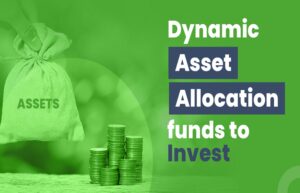Selecting Alternative Investments in a Rising Rate Environment

Non-traditional rates of return
In an environment of low but rising interest rates, yield opportunities are rare. Longer duration bonds, which would normally provide higher income, often become liabilities due to their higher interest rate sensitivity. Additionally, correlations between equities and fixed income securities tend to increase during times of high volatility and, as we know, markets have recently had to contend with not one, but several hurdles, ranging from high inflation to the war between Russia and Ukraine. As a result, exploring non-traditional fixed income securities is a way for investors to diversify their portfolios and potentially be able to earn better risk-adjusted returns in the future.
This article outlines four strategies that can complement a traditional core fixed income allocation: (See Appendix 1 – Correlation Matrix).
1 . Canadian preferred shares
While possessing characteristics similar to equities and fixed income securities, Canadian preferred shares have historically exhibited a low correlation to traditional investments 1 , making them an excellent source of portfolio diversification. This asset class also offers the benefit of rate reset equities which can make portfolios more adaptable in times of rising rates; the securities simply need to be “laddered” in the same way as GICs or bonds, so that a portion of the dividends in the portfolio are adjusted each year based on current rates. (That is, evenly dividing the portfolio by calendar year or maturity bucket.)
However, family management offices and investment advisers might find it inefficient to trade individual preferred shares, given the notorious liquidity and inventory constraints. It can also be cumbersome to take on the responsibility of laddering, as the process requires a specific type of expertise to spread rate reset stocks and continually maintain the right balance of investments.
Using an ETF to access preferred stocks solves many of these problems. For example, BMO Laddered Preferred Share ETF (ticker: ZPR)offers a staggered structure with an adjustable rate over 5 years, and 20 % of the portfolio is renewed each year. This fund is one of the most actively traded preferred stock ETFs in Canada. The liquidity of the secondary market allows it to trade at tight spreads between bid and ask prices. 2 If you already own individual preferred shares, but are concerned about a lack of liquidity, you can exchange your shares for ZPR units (Appendix 2 : ZPR Parameters).
2 . U.S. Preferred Shares
While the basic benefits are similar, US preferred shares have unique characteristics compared to their Canadian counterparts: they pay higher dividends, are more diversified and, in general, are less volatile than their cousins further north. In fact, the majority of US preferred shares are perpetual, their credit spreads are wider and they are redeemable after two years, which makes them less sensitive to changes in interest rates and therefore more similar to a credit product.
Additionally, US preferred stocks tend to have low correlation to bonds, stocks and cash. Like Canadian preferred shares, they can be a difficult asset class for Canadian investors to trade; however, ETFs provide easy access to a basket of assets with greater liquidity. But what about currencies? We know that investors’ views of the US dollar (US$) and the Canadian dollar (C$) are diverse, and that these views may change as market conditions change. To accommodate different strategies, the BMO US Preferred Share Index ETF is available in three versions: Hedged to Canadian dollars (symbol: ZHP), unhedged (symbol: ZUP) and in US dollar units (symbol: ZUP.U) .
The BMO US Preferred Share Index ETF uses a smart beta approach that focuses on quality rather than quantity. It is based on the universe of US preferred shares, then narrows this investment universe according to criteria of liquidity, solvency and risks specific to the company. By going beyond the traditional market capitalization screen, the portfolio is able to eliminate yield traps and consolidate a basket of quality assets that generate above-market returns (Appendix 3 : Parameters of the ZUP).








